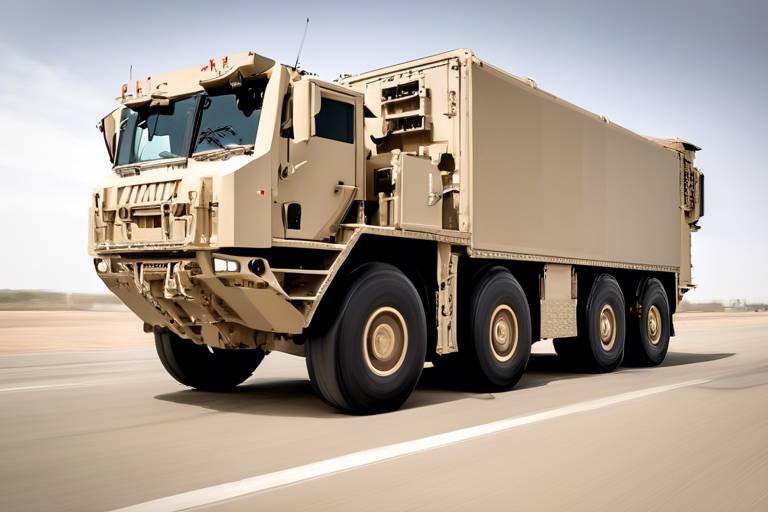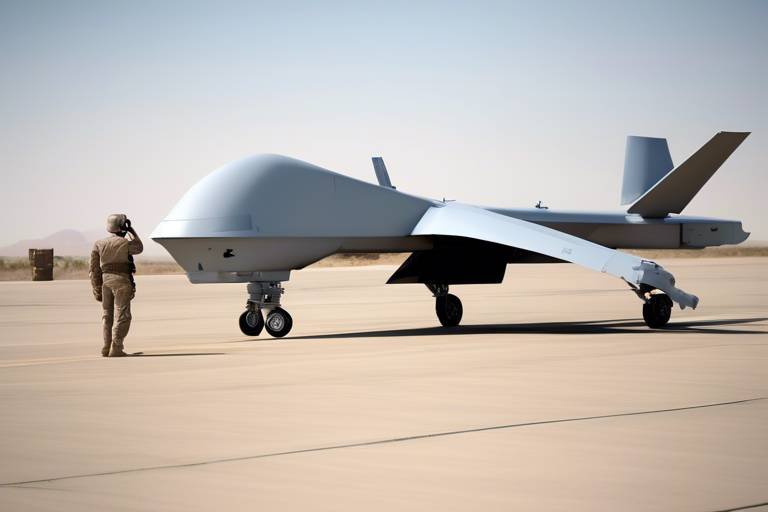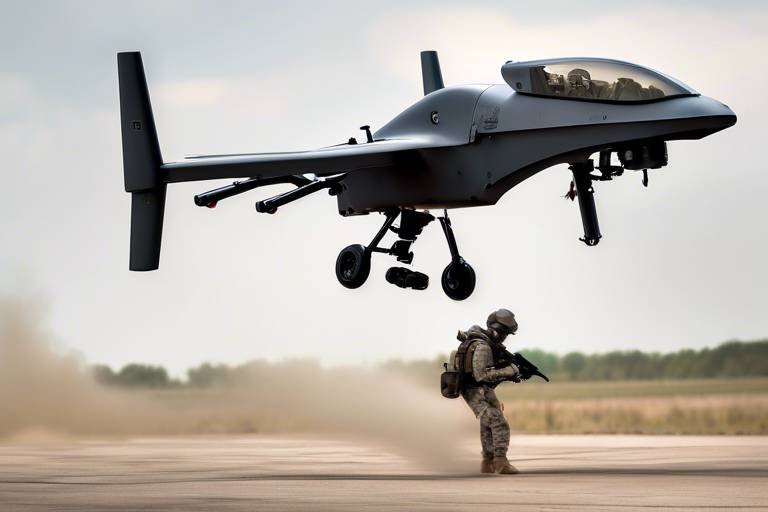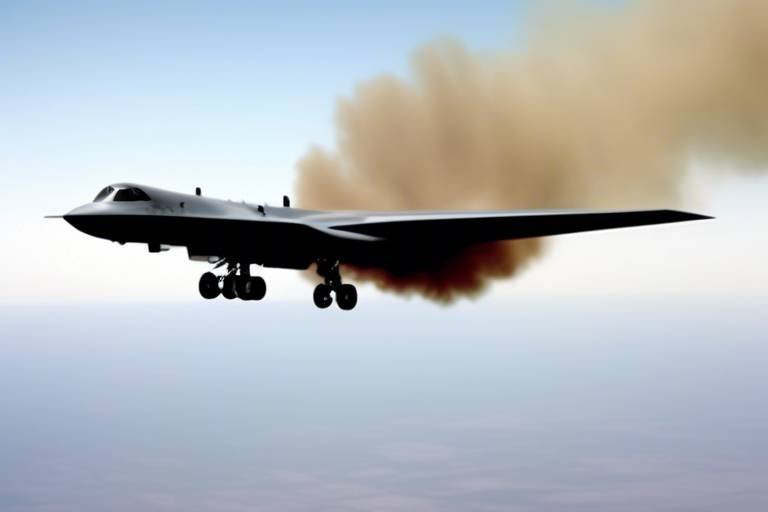Current Innovations in the UGV (Unmanned Ground Vehicle) Technology
The world of technology is evolving at an astonishing pace, and one of the most exciting frontiers is the realm of Unmanned Ground Vehicles (UGVs). These remarkable machines are not just a figment of science fiction anymore; they are becoming integral to various industries, revolutionizing the way we approach tasks that were once deemed too dangerous or labor-intensive for humans. From agriculture to military applications, UGVs are pushing boundaries and opening up new possibilities. This article delves deep into the latest advancements in UGV technology, shedding light on key innovations, applications, and the future trends that are shaping this dynamic industry.
One of the most significant advancements in UGV technology is in the area of autonomous navigation. Recent breakthroughs in navigation systems have dramatically improved the ability of UGVs to operate in complex environments without human intervention. Imagine a vehicle that can traverse rugged terrains, avoid obstacles, and adapt to changing conditions—all while making real-time decisions. This leap in technology allows UGVs to perform tasks in environments that would be challenging for human operators, such as disaster zones or battlefields.
The incorporation of Artificial Intelligence (AI) and Machine Learning (ML) technologies is revolutionizing UGVs. These innovations enhance decision-making processes and operational efficiency in real-time scenarios. By analyzing vast amounts of data, UGVs equipped with AI can learn from their surroundings and improve their performance over time. This means that they are not just following pre-programmed paths; they are actively adapting to their environments, making them smarter and more effective.
One of the most fascinating aspects of UGV technology is the advancements in computer vision. Innovations in this field allow UGVs to better perceive their surroundings, leading to improved obstacle detection and navigation accuracy. With enhanced vision capabilities, these vehicles can identify and respond to obstacles in real-time, ensuring safer and more efficient operations. For instance, a UGV can now recognize a fallen tree or a sudden drop in the terrain and adjust its path accordingly, much like a human driver would.
Another groundbreaking development is in 3D mapping technologies. UGVs can now create detailed environmental models that facilitate more effective route planning and obstacle avoidance. This capability is akin to a bird's-eye view of the landscape, allowing UGVs to navigate complex terrains with precision. Imagine a UGV mapping out a field before planting crops, ensuring that every inch of land is utilized effectively. This level of detail not only enhances operational efficiency but also contributes to better decision-making.
Moreover, sensor fusion techniques are combining data from multiple sources to improve the situational awareness of UGVs. By integrating information from various sensors—such as cameras, LIDAR, and GPS—UGVs can create a comprehensive understanding of their environment. This multi-faceted approach enhances their performance in diverse conditions, making them more reliable and effective in real-world applications.
Another exciting trend is the emergence of swarm robotics in UGV operations. This innovative approach allows multiple vehicles to work collaboratively, enhancing efficiency and task execution. Picture a fleet of UGVs working together like a well-coordinated team, each vehicle performing a specific role while communicating with the others. This synergy not only speeds up operations but also opens up new avenues for complex tasks that would be impossible for a single UGV to handle alone.
UGVs are finding applications across various sectors, showcasing their versatility and effectiveness in diverse operational environments. From agriculture to military use, these vehicles are transforming the way we approach many tasks. In agriculture, for example, UGVs are being deployed for precision farming, crop monitoring, and automated harvesting. This not only improves productivity but also reduces labor costs significantly. On the military front, UGVs are utilized for reconnaissance, supply transport, and explosive ordnance disposal, demonstrating their critical role in enhancing operational safety.
In military settings, the use of UGVs is becoming increasingly prevalent. They are deployed for a variety of tasks, including reconnaissance missions, where they can gather intelligence without putting human lives at risk. Additionally, UGVs are used for supply transport, ensuring that essential materials reach their destinations safely. Their role in explosive ordnance disposal is particularly noteworthy, as they can handle dangerous materials without risking human life, showcasing their invaluable contribution to military operations.
In the commercial sector, UGVs are revolutionizing the way businesses operate. In agriculture, for instance, these vehicles are being utilized for precision farming, which involves using technology to monitor and manage field variability in crops. This leads to better yields and resource management. Automated harvesting is another area where UGVs shine, reducing the need for manual labor and streamlining the harvesting process, thus enhancing overall productivity.
Despite their advancements, UGVs face several challenges that must be addressed to ensure their widespread adoption. These include regulatory hurdles, technical limitations, and the need for robust cybersecurity measures to guarantee safe operations. Navigating the complex regulatory landscape is essential for the widespread adoption of UGV technology. It requires collaboration between industry stakeholders and governing bodies to create a framework that supports innovation while ensuring safety.
Regulatory hurdles continue to pose significant challenges for UGV developers and users alike. As these vehicles become more prevalent, it is crucial for regulations to evolve in tandem. This means that industry stakeholders must work closely with governing bodies to establish clear guidelines that ensure safety without stifling innovation.
Technical limitations, such as battery life, payload capacity, and environmental adaptability, remain pressing concerns. As UGVs are deployed in more demanding scenarios, these challenges must be addressed to enhance their performance and reliability. Continuous research and development are essential to overcome these limitations and unlock the full potential of UGV technology.
- What are Unmanned Ground Vehicles (UGVs)? UGVs are robotic vehicles that operate on the ground without a human operator on board, often used for various applications such as military, agriculture, and logistics.
- How do UGVs navigate autonomously? UGVs use advanced navigation systems, AI, and sensor technologies to understand their environment and make real-time decisions.
- What industries benefit from UGV technology? UGVs are utilized across multiple industries, including military, agriculture, logistics, and disaster response.
- What are the main challenges facing UGV technology? Key challenges include regulatory hurdles, technical limitations, and the need for robust cybersecurity measures.

Advancements in Autonomous Navigation
Recent breakthroughs in autonomous navigation systems have significantly enhanced the capabilities of Unmanned Ground Vehicles (UGVs). Imagine a vehicle that can traverse rugged terrains, navigate through dense forests, or even maneuver in crowded urban environments—all without a human at the controls. This is not science fiction; it's the reality of today's UGV technology. Thanks to advancements in sensors, algorithms, and data processing, UGVs are now capable of operating in complex environments with remarkable precision.
One of the key innovations in autonomous navigation is the development of advanced GPS technology combined with inertial navigation systems (INS). This combination allows UGVs to maintain accurate positioning even in areas where GPS signals are weak or unavailable. For instance, when a UGV enters a tunnel or a dense forest, the INS provides real-time data on its movement and orientation, ensuring it stays on course.
Furthermore, the integration of sophisticated LiDAR (Light Detection and Ranging) systems has revolutionized how UGVs perceive their surroundings. LiDAR uses laser light to create high-resolution 3D maps of the environment, enabling UGVs to detect obstacles and navigate safely. This technology is akin to giving the vehicle a pair of "eyes" that can see in 360 degrees, allowing it to identify and react to potential hazards in real-time.
Another exciting development is the use of machine learning algorithms to enhance decision-making processes. These algorithms allow UGVs to learn from their experiences and improve their navigation skills over time. For example, a UGV that has previously navigated a specific route can analyze its past performance, identify areas for improvement, and adapt its strategy for future trips. This capability not only increases efficiency but also reduces the risk of accidents.
Moreover, the advent of sensor fusion techniques has played a crucial role in improving situational awareness. By combining data from various sensors—such as cameras, LiDAR, and ultrasonic sensors—UGVs can create a comprehensive understanding of their environment. This is similar to how humans use multiple senses to navigate the world around them. As a result, UGVs can make more informed decisions, whether it's avoiding an obstacle or selecting the best route to their destination.
As we look to the future, the potential for further advancements in autonomous navigation is immense. Researchers are exploring the integration of augmented reality (AR) and virtual reality (VR) technologies, which could allow operators to visualize the UGV's surroundings in real-time, even from a distance. This could enhance remote operation capabilities, enabling users to control UGVs in challenging environments with greater confidence.
In conclusion, the advancements in autonomous navigation are transforming UGV technology, making it safer, more efficient, and capable of handling a wide range of tasks. As these innovations continue to evolve, we can expect UGVs to play an increasingly vital role in various sectors, from military operations to agricultural practices.
- What is autonomous navigation? Autonomous navigation refers to the ability of a vehicle to navigate and operate without human intervention, using various technologies such as GPS, LiDAR, and machine learning.
- How do UGVs detect obstacles? UGVs use a combination of sensors, including cameras, LiDAR, and ultrasonic sensors, to detect obstacles and navigate safely through their environment.
- What are the benefits of using UGVs in agriculture? UGVs can improve efficiency in agriculture by automating tasks such as crop monitoring, precision farming, and harvesting, ultimately reducing labor costs and increasing productivity.
- Can UGVs operate in adverse weather conditions? Yes, advancements in sensor technology and algorithms are enabling UGVs to operate effectively in various weather conditions, although extreme weather may still pose challenges.

Integration of AI and Machine Learning
The integration of Artificial Intelligence (AI) and Machine Learning (ML) into Unmanned Ground Vehicles (UGVs) is nothing short of revolutionary. Imagine a vehicle that can not only navigate through complex terrains but also learn from its experiences to make better decisions in real time. This leap in technology is transforming how UGVs operate, making them smarter, more efficient, and capable of performing tasks that were once thought impossible.
At the heart of this transformation is the ability of UGVs to process vast amounts of data quickly. With advanced algorithms, these vehicles can analyze their surroundings, recognize patterns, and adapt their actions accordingly. For instance, in a military context, a UGV equipped with AI can assess a battlefield scenario, identify threats, and choose the safest route for navigation—all without human intervention. This level of autonomy not only enhances operational efficiency but also significantly reduces risks to human life.
Moreover, the decision-making capabilities of UGVs are being enhanced through the use of machine learning models that allow them to learn from past encounters. Picture a UGV that has previously navigated through a dense forest. By leveraging machine learning, it can remember the most effective paths, recognize obstacles it encountered, and apply this knowledge to future missions. This continuous learning process is akin to how humans improve their skills over time, making UGVs more reliable and effective in diverse environments.
One of the most exciting aspects of integrating AI and ML into UGVs is the potential for real-time adaptability. For example, if a UGV is tasked with delivering supplies in a changing landscape, it can instantly adjust its route based on new information, such as road closures or unexpected obstacles. This capability is facilitated by the use of sophisticated algorithms that process data from various sensors, including GPS, cameras, and LiDAR, allowing the UGV to maintain optimal performance under varying conditions.
To give you a clearer picture, let’s look at a table summarizing the key benefits of AI and ML integration in UGV technology:
| Benefit | Description |
|---|---|
| Enhanced Autonomy | UGVs can operate independently, reducing the need for human intervention. |
| Improved Decision-Making | AI enables UGVs to analyze data and make informed choices in real-time. |
| Continuous Learning | Machine learning allows UGVs to learn from past experiences, improving future performance. |
| Real-Time Adaptability | UGVs can adjust their actions based on changing environments and conditions. |
As we look to the future, the potential applications of AI and machine learning in UGV technology are vast. From agriculture to disaster response, the ability for these vehicles to operate autonomously, make real-time decisions, and learn from their environments will redefine operational capabilities across multiple sectors. However, with these advancements also come challenges, particularly in ensuring the safety and reliability of AI-driven systems.
- What is the role of AI in UGV technology?
AI enhances the decision-making capabilities of UGVs, allowing them to operate autonomously and adapt to changing environments. - How does machine learning improve UGV performance?
Machine learning enables UGVs to learn from past experiences, improving their navigation and operational efficiency over time. - What are the benefits of integrating AI and ML in UGVs?
The integration leads to enhanced autonomy, improved decision-making, continuous learning, and real-time adaptability. - Are there any challenges associated with AI in UGVs?
Yes, challenges include ensuring safety, reliability, and addressing regulatory concerns surrounding the use of AI technologies.

Computer Vision Enhancements
The world of Unmanned Ground Vehicles (UGVs) is evolving rapidly, and one of the most exciting areas of advancement is in computer vision technology. This innovation is like giving UGVs a pair of super-powered eyes, enabling them to see and interpret their surroundings with remarkable precision. Imagine a vehicle that can navigate through a dense forest or a bustling urban environment without a human operator constantly guiding it. This capability is becoming a reality thanks to the latest enhancements in computer vision.
At the heart of these improvements is the integration of advanced algorithms and high-resolution imaging systems. UGVs are now equipped with cameras and sensors that can capture vast amounts of visual data, transforming it into actionable information. This data processing allows UGVs to identify obstacles, recognize landmarks, and even differentiate between various types of terrain. For instance, a UGV can distinguish between a muddy patch and solid ground, which is crucial for effective navigation.
One of the key features of modern computer vision systems is real-time object detection. This technology enables UGVs to analyze their environment instantaneously, making split-second decisions that enhance safety and operational efficiency. For example, if a UGV encounters an unexpected obstacle, it can quickly assess the situation and choose an alternate route, much like how a human driver reacts to sudden changes in traffic.
Moreover, the advancements in machine learning play a pivotal role in refining these computer vision capabilities. UGVs can learn from their experiences, improving their ability to navigate complex environments over time. By utilizing large datasets to train their algorithms, these vehicles can become increasingly adept at recognizing patterns and making informed decisions. This learning process is akin to how we learn to drive better as we gain more experience on the road.
Another fascinating aspect of computer vision enhancements is the development of stereo vision technology. This technique mimics human depth perception, allowing UGVs to gauge distances more accurately. With stereo vision, a UGV can determine how far away an object is, which is essential for tasks like precise maneuvering in tight spaces or avoiding collisions with other vehicles or pedestrians.
To illustrate the impact of these advancements, consider the following table that highlights some of the key benefits of enhanced computer vision in UGVs:
| Feature | Benefit |
|---|---|
| Real-time Object Detection | Immediate response to obstacles, enhancing safety. |
| Machine Learning Integration | Improved decision-making through experience-based learning. |
| Stereo Vision | Accurate distance measurement for better navigation. |
| High-Resolution Imaging | Enhanced environmental perception for effective route planning. |
In conclusion, the innovations in computer vision are not just about making UGVs smarter; they are fundamentally changing how these vehicles operate in the world. As technology continues to advance, we can expect UGVs to become even more autonomous and capable, opening up new possibilities for their use in various industries. The future of UGVs is bright, and computer vision enhancements are at the forefront of this exciting evolution.
- What is computer vision in UGVs? Computer vision refers to the ability of UGVs to interpret visual data from their surroundings, enabling them to navigate and make decisions autonomously.
- How does machine learning enhance computer vision? Machine learning allows UGVs to learn from past experiences, improving their ability to recognize patterns and make better decisions in real-time.
- What are the applications of UGVs with advanced computer vision? UGVs with enhanced computer vision can be used in various fields, including agriculture for crop monitoring, in military for reconnaissance, and in logistics for automated transport.

3D Mapping Technologies
The advent of has been a game-changer in the realm of Unmanned Ground Vehicles (UGVs). Imagine a world where vehicles can navigate complex terrains with the precision of a skilled driver—this is the reality that 3D mapping offers. By creating detailed three-dimensional representations of environments, UGVs can make informed decisions about their movements, significantly reducing the risk of accidents and enhancing operational efficiency.
At the core of 3D mapping is the ability to capture the physical characteristics of an area accurately. This technology employs various sensors, including LiDAR, cameras, and GPS, to gather data. The data is then processed to create a comprehensive 3D model that UGVs can use for navigation and obstacle avoidance. This model includes vital information such as terrain elevation, surface types, and potential hazards. The result? A UGV that can traverse rugged landscapes, navigate tight spaces, and avoid obstacles with remarkable accuracy.
One of the most impressive aspects of 3D mapping technologies is their ability to adapt to changing environments. For instance, if a UGV is deployed in an agricultural field, it can continuously update its 3D map as crops grow or as weather conditions change. This adaptability ensures that the vehicle operates optimally, regardless of external factors. Furthermore, the integration of real-time data processing allows UGVs to respond to dynamic situations, making them invaluable in critical applications such as search and rescue operations or military missions.
To illustrate the impact of 3D mapping technologies on UGV capabilities, consider the following table that highlights key features and benefits:
| Feature | Benefit |
|---|---|
| High-resolution mapping | Improved navigation accuracy |
| Real-time updates | Adaptability to changing environments |
| Obstacle detection | Enhanced safety and efficiency |
| Data integration | Comprehensive situational awareness |
In summary, 3D mapping technologies are not just a luxury; they are a necessity for the future of UGVs. As these vehicles become increasingly integral to various industries, the importance of accurate and detailed environmental mapping cannot be overstated. Whether it’s navigating through a dense forest, surveying an agricultural field, or conducting military operations, 3D mapping technologies empower UGVs to perform tasks that were once deemed impossible. The future of UGV technology is bright, and 3D mapping is at the forefront of this exciting evolution.
- What are 3D mapping technologies? - They are advanced systems that create three-dimensional representations of environments to aid in navigation and decision-making for UGVs.
- How do 3D mapping technologies improve UGV performance? - By providing accurate terrain data, UGVs can navigate more effectively, avoid obstacles, and adapt to changing conditions.
- What sensors are typically used in 3D mapping? - Common sensors include LiDAR, cameras, and GPS devices which work together to gather environmental data.

Sensor Fusion Techniques
The realm of Unmanned Ground Vehicles (UGVs) is rapidly evolving, and one of the most exciting advancements is in the area of . These techniques are critical for enhancing the situational awareness of UGVs, allowing them to interpret and respond to their environments more effectively. Imagine a UGV as a highly skilled detective, piecing together clues from various sources to solve a mystery. In this case, the clues are data from multiple sensors, and the mystery is navigating safely and efficiently through complex terrains.
At the heart of sensor fusion is the ability to combine data from different types of sensors—such as cameras, LiDAR, radar, and ultrasonic sensors—into a cohesive understanding of the vehicle's surroundings. This integration not only improves the accuracy of obstacle detection but also enhances the vehicle's ability to make real-time decisions. For instance, while a camera might provide detailed visual information, a LiDAR sensor can measure distances with precision. When these data streams are fused, the UGV can create a comprehensive 3D map of its environment, leading to better navigation and obstacle avoidance.
Moreover, sensor fusion techniques can be categorized into two main approaches: low-level fusion and high-level fusion. Low-level fusion involves integrating raw data from sensors to create a unified dataset, while high-level fusion combines processed information to make informed decisions. Both approaches have their unique advantages, and the choice between them often depends on the specific operational requirements of the UGV.
| Type of Fusion | Description | Advantages |
|---|---|---|
| Low-Level Fusion | Combines raw sensor data into a single dataset. | Higher accuracy and detail in environmental perception. |
| High-Level Fusion | Integrates processed information for decision-making. | Faster response times and reduced computational load. |
Another exciting aspect of sensor fusion is its ability to enhance redundancy and robustness in UGV operations. By relying on multiple sensors, the vehicle can maintain functionality even if one sensor fails or is obstructed. This is akin to having a backup plan in life; if one route is blocked, you have alternatives to navigate around the obstacle.
However, the implementation of sensor fusion is not without its challenges. The complexity of data integration requires sophisticated algorithms and significant computational power. Additionally, ensuring that the fused data is timely and accurate is essential for the UGV's operational success. Developers are continually working to refine these algorithms, making them more efficient and capable of processing vast amounts of data in real-time.
As we look to the future, the potential of sensor fusion techniques in UGV technology is immense. With advancements in artificial intelligence and machine learning, we can expect even greater improvements in how these vehicles interpret their environments. The synergy of these technologies promises to elevate UGV capabilities, making them more autonomous, reliable, and efficient in various applications.
- What is sensor fusion? Sensor fusion is the process of integrating data from multiple sensors to create a comprehensive understanding of an environment.
- Why is sensor fusion important for UGVs? It enhances situational awareness, improves obstacle detection, and enables real-time decision-making.
- What types of sensors are commonly used in UGVs? Common sensors include cameras, LiDAR, radar, and ultrasonic sensors.
- What are the challenges of implementing sensor fusion? Challenges include the complexity of data integration, the need for advanced algorithms, and ensuring timely and accurate data processing.

Swarm Robotics Applications
Swarm robotics is a fascinating field that mimics the collective behavior observed in nature—think of how a flock of birds or a school of fish moves in perfect harmony. This approach is becoming increasingly vital in the realm of Unmanned Ground Vehicles (UGVs), where multiple vehicles can collaborate to enhance operational efficiency. Imagine a scenario where a fleet of UGVs works together to survey a vast area, each vehicle communicating and coordinating with the others to cover more ground than a single unit could ever achieve. This is not just a dream; it’s a reality that is transforming how we approach various tasks.
One of the most compelling applications of swarm robotics in UGV technology is in search and rescue missions. When disaster strikes, every second counts, and deploying a swarm of UGVs can significantly expedite the search process. These vehicles can cover large areas quickly, using their collective intelligence to identify hotspots where victims might be located. With real-time data sharing among the swarm, they can adapt their strategies dynamically, ensuring that no stone is left unturned.
Moreover, swarm robotics is proving to be a game-changer in military operations. In battlefield scenarios, a group of UGVs can conduct reconnaissance missions, gather intelligence, or even engage in coordinated strikes. The ability to operate as a cohesive unit allows for greater adaptability and resilience. For instance, if one UGV encounters an obstacle, the others can quickly adjust their paths to continue the mission without missing a beat. This adaptability is crucial in unpredictable environments where every decision can mean the difference between success and failure.
In addition to military and rescue operations, swarm robotics is also making waves in agriculture. Picture a fleet of UGVs working together on a farm, each responsible for different tasks such as planting, watering, and harvesting. By communicating and coordinating their actions, these UGVs can optimize resource use, reduce waste, and increase overall productivity. For example, one UGV might monitor soil moisture levels while another applies fertilizer precisely where needed, leading to healthier crops and higher yields.
To illustrate the potential of swarm robotics, consider the following table that highlights key benefits:
| Benefit | Description |
|---|---|
| Increased Efficiency | Multiple UGVs can cover larger areas and complete tasks faster than a single vehicle. |
| Dynamic Adaptability | Swarm units can quickly adjust their strategies based on real-time data and environmental changes. |
| Resource Optimization | Collaboration allows for better use of resources, reducing waste and costs. |
| Enhanced Safety | In hazardous environments, deploying swarms minimizes risk to human operators. |
As we continue to explore the potential of swarm robotics in UGV technology, it’s clear that the future holds exciting possibilities. The ability for multiple machines to work together not only enhances operational efficiency but also opens up new avenues for innovation across various sectors. Whether it’s in agriculture, military, or disaster response, swarm robotics is paving the way for a more interconnected and efficient world.
- What is swarm robotics? Swarm robotics refers to a field of robotics that focuses on the coordination of multiple robots to perform tasks collectively, similar to how social insects operate.
- How do UGVs benefit from swarm robotics? UGVs benefit from swarm robotics by improving efficiency, adaptability, and safety in various applications, from agriculture to military operations.
- Are swarm robotics systems autonomous? Yes, many swarm robotics systems are designed to operate autonomously, using advanced algorithms and communication protocols to coordinate actions without human intervention.

Applications in Various Industries
The versatility of Unmanned Ground Vehicles (UGVs) is nothing short of remarkable. They are not just confined to military applications; their capabilities are being harnessed across a multitude of industries. From agriculture to logistics, UGVs are transforming operational efficiencies and redefining traditional workflows. Imagine a world where machines handle the heavy lifting, allowing humans to focus on more strategic tasks. This is not a distant future—it's happening now!
In the agricultural sector, UGVs are leading the charge in precision farming. These vehicles are equipped with advanced sensors and imaging technologies that allow them to monitor crop health, analyze soil conditions, and even automate harvesting processes. For instance, a UGV can traverse a field, collecting data on moisture levels and nutrient content, which farmers can use to make informed decisions about irrigation and fertilization. This not only boosts productivity but also significantly reduces labor costs. The integration of UGVs in farming practices is akin to having a personal assistant that never tires—always ready to work when needed!
Moreover, the logistics industry is experiencing a revolution thanks to UGV technology. Warehouses are increasingly deploying these vehicles for tasks such as inventory management and order fulfillment. With their ability to navigate complex environments and transport goods with precision, UGVs are streamlining supply chains and reducing delivery times. Picture a bustling warehouse where UGVs glide seamlessly between aisles, picking up and delivering items without human intervention. This level of efficiency is game-changing, allowing businesses to meet customer demands faster than ever before.
In military applications, UGVs have proven to be indispensable. They are utilized for reconnaissance missions, supply transport, and even explosive ordnance disposal. By taking on high-risk tasks, UGVs enhance operational safety for military personnel. For example, a UGV equipped with bomb disposal technology can approach and neutralize threats without putting human lives at risk. This capability not only saves lives but also allows for more strategic planning in military operations.
To illustrate the breadth of UGV applications, consider the following table:
| Industry | Application | Benefits |
|---|---|---|
| Agriculture | Precision Farming | Improved crop monitoring, reduced labor costs |
| Logistics | Warehouse Management | Streamlined operations, faster delivery times |
| Military | Reconnaissance and Supply Transport | Enhanced safety, efficient task execution |
| Construction | Site Surveying | Accurate data collection, reduced manpower |
As the technology continues to evolve, we can expect to see even more innovative applications of UGVs across various sectors. The potential for growth is immense, and industries are just beginning to scratch the surface of what these vehicles can achieve. The future is bright for UGVs, and their integration into everyday operations will only expand, paving the way for a new era of efficiency and productivity.
- What are Unmanned Ground Vehicles (UGVs)?
UGVs are robotic vehicles that operate on the ground without a human driver. They can be controlled remotely or operate autonomously using advanced technologies. - How are UGVs used in agriculture?
UGVs are used for tasks such as crop monitoring, precision farming, and automated harvesting, which help improve efficiency and reduce labor costs. - What benefits do UGVs provide in the logistics industry?
In logistics, UGVs streamline operations by automating tasks like inventory management and order fulfillment, leading to faster delivery times and reduced operational costs. - Are UGVs safe to use in military applications?
Yes, UGVs enhance safety in military operations by taking on high-risk tasks, allowing human personnel to remain out of harm's way.

Military and Defense Use Cases
The role of Unmanned Ground Vehicles (UGVs) in military and defense applications has evolved dramatically over recent years. These vehicles are not just futuristic gadgets; they are becoming integral to modern warfare, enhancing operational efficiency and safety. Imagine a battlefield where soldiers can rely on machines to perform the most dangerous tasks—this is not science fiction; it’s happening right now.
One of the primary applications of UGVs in the military is for reconnaissance missions. Equipped with advanced sensors and cameras, these vehicles can scout enemy positions without putting human lives at risk. They can traverse challenging terrains, gather intelligence, and relay real-time data back to command centers. This capability not only saves lives but also provides a tactical advantage, allowing commanders to make informed decisions based on accurate information.
Another significant use case for UGVs is in supply transport. Imagine a convoy of UGVs autonomously delivering supplies to troops stationed in remote or hostile areas. This reduces the need for human drivers to navigate dangerous routes, minimizing the risk of ambushes and attacks. Moreover, UGVs can operate around the clock, ensuring that supplies reach their destinations without delay. In fact, studies have shown that UGVs can improve logistical efficiency by up to 30% in certain scenarios, a game-changer for military operations.
Furthermore, UGVs are proving invaluable in explosive ordnance disposal (EOD). Bomb disposal is one of the most perilous tasks in the military. By deploying UGVs equipped with specialized tools, personnel can safely neutralize threats from a distance. These vehicles can navigate to the site, assess the situation, and even disarm explosives, all while keeping human operators out of harm's way. This not only enhances safety but also increases the likelihood of successful operations.
However, the integration of UGVs into military operations is not without its challenges. Issues such as cybersecurity are paramount; as these vehicles become more connected, they also become more vulnerable to cyber attacks. Ensuring that UGVs are protected against hacking attempts is critical to maintaining operational integrity. Additionally, the regulatory landscape governing military use of UGVs is complex and requires collaboration between military leaders and technology developers to navigate effectively.
In summary, the use of UGVs in military and defense scenarios is transforming how operations are conducted. From reconnaissance to supply transport and EOD, these vehicles are enhancing safety and efficiency on the battlefield. As technology continues to advance, we can expect even more innovative applications of UGVs in military contexts, paving the way for a safer and more effective approach to modern warfare.
- What are UGVs used for in the military? UGVs are primarily used for reconnaissance, supply transport, and explosive ordnance disposal.
- How do UGVs enhance safety in military operations? By performing high-risk tasks remotely, UGVs keep human soldiers out of harm's way.
- What challenges do UGVs face in military applications? Key challenges include cybersecurity threats and navigating complex regulations.
- Can UGVs operate in all terrains? While UGVs are designed to handle various terrains, their performance can be affected by extreme environmental conditions.

Commercial and Agricultural Innovations
The integration of Unmanned Ground Vehicles (UGVs) into commercial and agricultural sectors is nothing short of revolutionary. Imagine a world where farms operate with the precision of a surgeon, where every inch of soil is monitored, and every crop is tended to with robotic efficiency. UGVs are making this vision a reality, and the innovations in this space are astounding.
In agriculture, UGVs are being utilized for precision farming, which involves the use of technology to monitor and manage field variability in crops. This means farmers can apply water, fertilizers, and pesticides more efficiently, reducing waste and maximizing yield. For instance, a UGV equipped with advanced sensors can analyze soil health and moisture levels, providing farmers with real-time data to make informed decisions.
Moreover, UGVs are playing a pivotal role in crop monitoring. These vehicles can traverse vast fields, collecting data on crop health through imaging technology. This data is then processed using sophisticated algorithms to identify areas that need attention, whether it's a disease outbreak or a nutrient deficiency. This proactive approach not only saves time but also enhances crop resilience.
Automated harvesting is another area where UGVs shine. Imagine a fleet of UGVs working around the clock, meticulously harvesting crops at their peak ripeness. This innovation not only reduces the need for manual labor but also ensures that produce is collected at the optimal time, enhancing quality and reducing spoilage. The efficiency of these machines can lead to significant cost savings for farmers, allowing them to focus on other critical aspects of their operations.
As we look at the broader commercial landscape, UGVs are also being deployed in logistics and supply chain management. They can transport goods within warehouses or even navigate complex urban environments for last-mile delivery. This capability is particularly beneficial in reducing delivery times and operational costs. For example, companies are beginning to employ UGVs for inventory management, where these vehicles can autonomously navigate through aisles, scanning barcodes and updating stock levels in real-time.
To summarize, the innovations in UGV technology are transforming both agriculture and commercial industries by:
- Enhancing operational efficiency
- Reducing labor costs
- Improving data collection and analysis
- Increasing crop yield and quality
The future of UGVs in these sectors is bright, with ongoing advancements promising even greater capabilities. As technology continues to evolve, we can expect to see more sophisticated UGVs that not only assist in farming and logistics but also adapt to the unique challenges posed by different environments. The synergy between humans and UGVs heralds a new era of productivity and innovation.
- What are UGVs and how are they used in agriculture?
UGVs, or Unmanned Ground Vehicles, are autonomous or remotely operated machines used in agriculture for tasks such as monitoring crop health, precision farming, and automated harvesting. - What are the benefits of using UGVs in commercial industries?
UGVs enhance efficiency, reduce labor costs, improve accuracy in inventory management, and expedite delivery processes in logistics. - Are there any limitations to UGV technology?
Yes, some limitations include battery life, environmental adaptability, and regulatory hurdles that need to be addressed for widespread adoption.
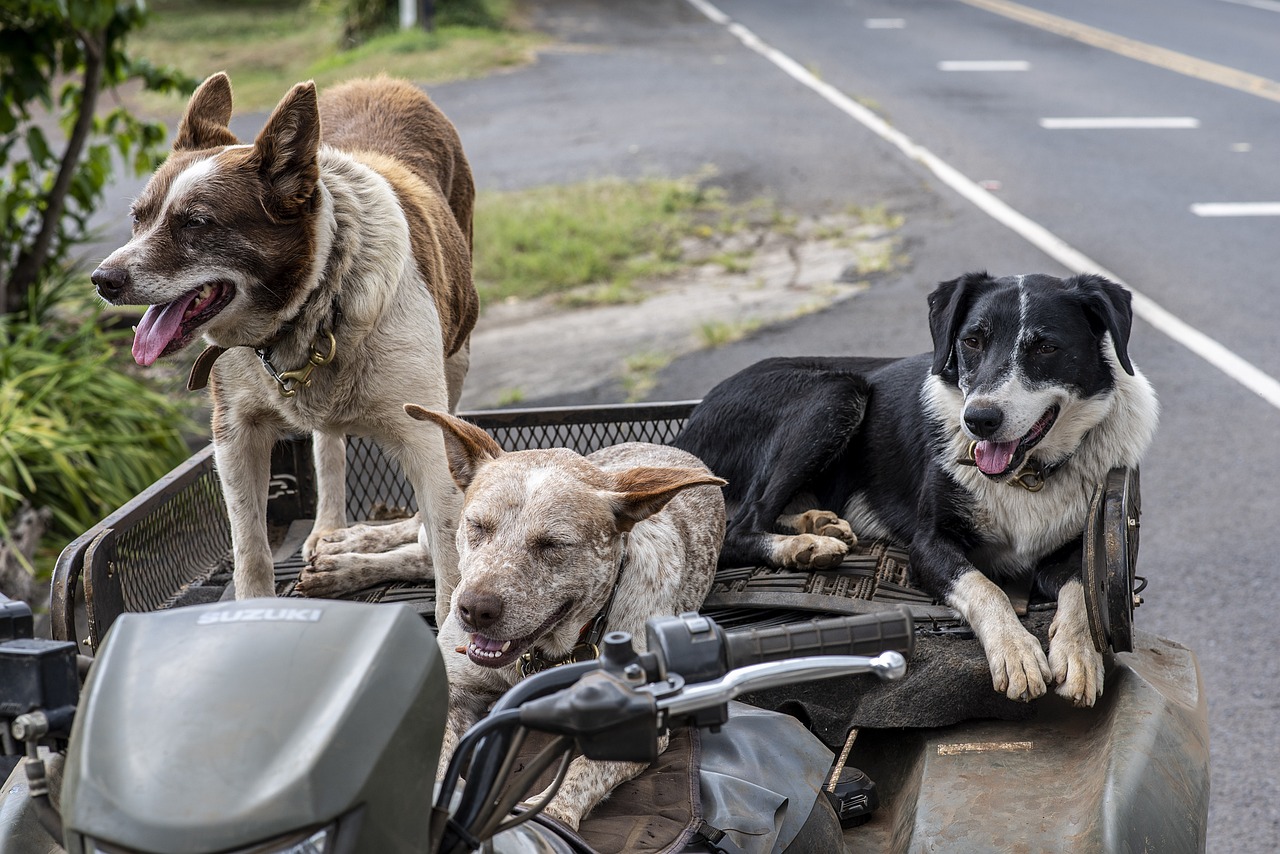
Challenges and Limitations
While the advancements in UGV (Unmanned Ground Vehicle) technology are nothing short of remarkable, there are still significant that need to be addressed. One of the most pressing issues is the regulatory landscape surrounding UGV operations. As these vehicles become more integrated into various industries, navigating the complex web of regulations can be daunting. Governments and industry stakeholders must collaborate to create frameworks that ensure safety while promoting innovation. Without clear guidelines, many companies may hesitate to invest in UGV technology, stifling its growth.
Another major hurdle is the technical limitations inherent in current UGV designs. For instance, battery life remains a critical concern. Most UGVs are powered by batteries that can only sustain operations for a limited time. This limitation not only affects the duration of missions but also impacts the overall efficiency of UGVs in various applications. Imagine a delivery drone that runs out of power halfway through its route; the consequences could be costly and disruptive.
Moreover, the payload capacity of UGVs can restrict their versatility. Many UGVs are designed for specific tasks, which means they may not be able to carry additional equipment or supplies when needed. This can be particularly problematic in military operations, where adaptability is crucial. For example, a UGV tasked with reconnaissance may need to switch to a supply transport role, but if it lacks the capacity to carry the necessary gear, the mission could be compromised.
Environmental adaptability is yet another challenge. UGVs must operate in various terrains and weather conditions, from muddy fields to snow-covered landscapes. However, many existing models struggle to perform optimally in extreme conditions. The need for robust sensor systems and advanced algorithms to navigate diverse environments adds to the complexity and cost of developing effective UGVs.
In addition to these challenges, cybersecurity is a growing concern. As UGVs become more connected and reliant on data-sharing, they also become more vulnerable to cyberattacks. A compromised UGV could lead to disastrous outcomes, especially in sensitive applications like military operations or critical infrastructure. Therefore, implementing strong cybersecurity measures is essential to ensure safe and reliable UGV operations.
In summary, while UGV technology is advancing rapidly, it is essential to address the challenges of regulatory compliance, technical limitations, environmental adaptability, and cybersecurity to unlock its full potential. As the industry continues to evolve, overcoming these hurdles will pave the way for more widespread adoption and innovative applications.
- What are the primary challenges facing UGV technology today?
Some of the main challenges include regulatory hurdles, technical limitations such as battery life and payload capacity, environmental adaptability, and cybersecurity concerns. - How can regulatory issues impact the development of UGVs?
Regulatory challenges can create uncertainty for companies, making them hesitant to invest in UGV technology and slowing down innovation. - What role does cybersecurity play in UGV operations?
As UGVs become increasingly connected, they are more susceptible to cyberattacks, making robust cybersecurity measures essential for safe operations.

Regulatory Hurdles
The journey of Unmanned Ground Vehicles (UGVs) into mainstream usage isn't just about technological advancements; it’s also heavily influenced by that can significantly slow down progress. As UGVs become more sophisticated, the need for clear and comprehensive regulations becomes increasingly important. These regulations are crucial for ensuring safety, privacy, and ethical considerations in the deployment of these autonomous machines.
One of the primary challenges lies in the lack of standardized regulations across different regions. Each country has its own set of rules governing the use of UGVs, which can lead to confusion and inconsistency. For instance, while some nations may embrace UGV technology and provide a conducive regulatory environment, others may impose strict limitations that hinder innovation. This disparity can complicate international operations for companies looking to deploy UGVs across borders.
Moreover, regulatory bodies often struggle to keep pace with the rapid advancements in UGV technology. As new features and capabilities emerge, existing regulations may become outdated, leading to a gap between what is technologically possible and what is legally permissible. This lag can stifle innovation, as developers may hesitate to invest in new technologies that could face regulatory scrutiny.
Additionally, public perception plays a vital role in shaping regulations. Concerns about privacy, safety, and the potential misuse of UGVs can influence lawmakers to impose stricter regulations. For instance, if the public fears that UGVs could be used for surveillance without consent, legislators may respond by implementing stringent privacy laws that restrict UGV operations. This can create a challenging environment for developers who must navigate both technological possibilities and societal concerns.
To illustrate the complexity of regulatory hurdles, consider the following table that outlines some of the key challenges faced by UGV developers:
| Challenge | Description |
|---|---|
| Lack of Standardization | Inconsistent regulations across different countries create confusion and operational difficulties. |
| Outdated Regulations | Regulatory bodies often lag behind technological advancements, creating gaps in legal frameworks. |
| Public Concerns | Fears about safety and privacy can lead to stricter regulations that stifle innovation. |
| Compliance Costs | Meeting regulatory requirements can be expensive and time-consuming for developers. |
To overcome these regulatory hurdles, collaboration is essential. Industry stakeholders, including UGV manufacturers, policymakers, and consumer advocacy groups, must engage in open dialogues to develop regulations that protect the public while fostering innovation. By working together, they can create a framework that not only addresses safety and ethical concerns but also encourages technological advancements in the UGV sector.
- What are the main regulatory challenges for UGVs? The main challenges include lack of standardization, outdated regulations, public concerns about safety and privacy, and high compliance costs.
- How can industry stakeholders address these regulatory hurdles? By collaborating through open dialogues to create comprehensive and flexible regulations that protect public interests while promoting innovation.
- Why is public perception important in UGV regulation? Public concerns can heavily influence lawmakers, leading to stricter regulations that may hinder technological advancements.

Technical Limitations
Despite the remarkable advancements in Unmanned Ground Vehicle (UGV) technology, there are still several that developers and users must contend with. These challenges can hinder the full potential of UGVs, making it crucial to address them for broader implementation and effectiveness. One of the most pressing issues is battery life. Many UGVs are powered by batteries that, while efficient, often struggle to provide the necessary runtime for extended missions. Imagine sending a UGV on a reconnaissance mission only for it to return prematurely due to a depleted battery—this can be a significant operational setback.
Another limitation is payload capacity. UGVs are designed to carry specific loads, but this capacity can be restrictive, particularly in military and logistics applications where heavier equipment may be required. The need for a balance between weight and functionality is a constant challenge. Additionally, the environmental adaptability of UGVs is a critical factor. While many UGVs can navigate various terrains, extreme weather conditions such as heavy rain, snow, or mud can severely impact their performance. For instance, a UGV designed for desert operations may struggle in a flooded environment, limiting its versatility.
Moreover, the integration of advanced sensors can also present challenges. While sensor technology has improved significantly, the sheer volume of data generated can overwhelm the processing capabilities of some UGVs. This can lead to delays in decision-making and hinder real-time responsiveness, which is crucial in dynamic operational environments. The need for robust cybersecurity measures is another technical hurdle, as UGVs become more connected and reliant on data networks, making them vulnerable to hacking and cyber threats. Ensuring that these systems are secure is essential to maintain operational integrity.
In summary, while UGV technology is advancing rapidly, addressing these technical limitations is vital for maximizing their potential across various applications. Developers must focus on enhancing battery technology, increasing payload capacities, improving environmental adaptability, and ensuring robust cybersecurity measures to pave the way for more reliable and efficient UGV operations.
- What are the main technical limitations of UGVs? The main limitations include battery life, payload capacity, environmental adaptability, data processing capabilities, and cybersecurity vulnerabilities.
- How is battery life being improved in UGVs? Research is ongoing into more efficient battery technologies, including lithium-sulfur and solid-state batteries, which promise longer life and quicker charging times.
- Can UGVs operate in extreme weather conditions? While some UGVs are designed for specific environments, many struggle in extreme weather conditions, which is an area of active research and development.
- What role does cybersecurity play in UGV operations? As UGVs become more connected, ensuring their cybersecurity is crucial to protect against hacking and ensure safe operations.
Frequently Asked Questions
- What are Unmanned Ground Vehicles (UGVs)?
UGVs are robotic vehicles that operate on the ground without a human driver on board. They can be controlled remotely or operate autonomously using advanced technologies such as AI and machine learning.
- How do UGVs navigate autonomously?
Recent advancements in autonomous navigation systems allow UGVs to use a combination of sensors, computer vision, and 3D mapping technologies to navigate complex environments without human intervention.
- What role does AI play in UGV technology?
AI enhances the decision-making processes of UGVs, enabling them to analyze data in real-time and improve their operational efficiency, making them more effective in various scenarios.
- Can UGVs work together in groups?
Yes! Swarm robotics is an innovative approach where multiple UGVs can collaborate and perform tasks more efficiently, similar to how a flock of birds works together.
- What industries are utilizing UGVs?
UGVs are being used across a variety of sectors, including agriculture for precision farming, military for reconnaissance and supply transport, and logistics for automated deliveries.
- What challenges do UGVs face?
UGVs encounter several challenges such as regulatory hurdles, technical limitations like battery life and payload capacity, and the need for robust cybersecurity measures to ensure safe operations.
- How can regulatory hurdles affect UGV deployment?
Navigating the complex regulatory landscape is crucial for the widespread adoption of UGV technology. Collaboration between industry stakeholders and governing bodies is necessary to address these challenges.
- What are the limitations of current UGV technology?
Current limitations include battery life, which affects operational time, payload capacity, which limits the weight they can carry, and environmental adaptability, which can hinder performance in diverse conditions.












